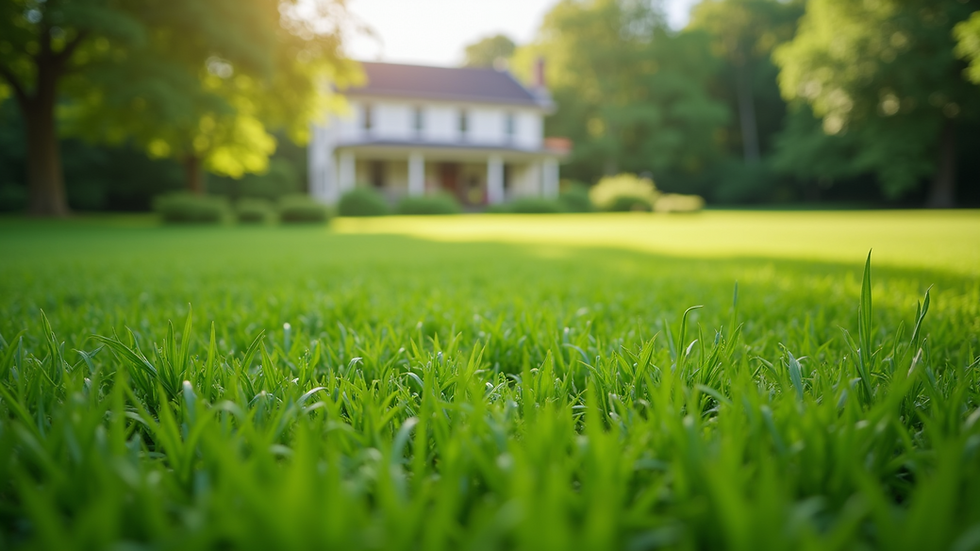The Importance of Pruning Palm Trees
- Clifford Withey
- Oct 13
- 3 min read
Updated: 6 days ago
Understanding Palm Tree Growth
Palm trees are distinct from many other trees because they primarily grow from the top. New fronds emerge from the crown, while older ones gradually die off. These dead fronds can clutter the tree and pose risks of pest infestations or diseases. For instance, studies show that nearly 30% of palm trees affected by pests were due to improper care and neglect.
Regular pruning removes these dead or damaged fronds, allowing the tree to direct its energy toward new growth. This practice leads to a healthier tree and enhances its visual appeal, making it stand out in your landscape.
Health Benefits of Pruning
Pruning is not just about looks; it is vital for the health of your palm trees. Old fronds can attract pests, such as spider mites and scale insects, which can spread to other plants. By regularly cutting back these fronds, you lower the risk of infestations. For example, a well-pruned palm can reduce pest occurrences by up to 50%.
Additionally, proper pruning promotes improved air circulation and sunlight penetration within the canopy. Good airflow is critical for palm trees, as they thrive in bright environments. In fact, studies indicate that enhanced air circulation can reduce the likelihood of fungal diseases, which often flourish in damp, shaded conditions.

Aesthetic Appeal
Pruning significantly enhances the beauty of palm trees. A well-maintained palm can become the focal point of your landscape design. Removing unsightly dead fronds and keeping the palm tidy can elevate the overall look of your yard. For example, a properly pruned Royal Palm can improve the visual harmony of a garden, making it look intentionally designed.
Moreover, each species of palm tree has unique characteristics. For instance, the wispy fronds of the Foxtail Palm can be highlighted through careful pruning, enhancing its graceful silhouette. When you accentuate these natural features, your landscape becomes more visually appealing.
Timing Your Pruning
Timing is key for effective pruning. The best time is during the growing season, specifically late spring or early summer. This period allows the tree to recover quickly and encourages fresh growth. For example, pruning in this window can lead to a noticeable increase in new frond production—sometimes up to 20% more than if pruned at the wrong time.
Avoid heavy pruning in the fall or winter, as this can stress your tree and increase its vulnerability to cold damage. Always consider the specific needs of your palm species, since some may have special requirements.
Tools and Techniques
Using the right tools and techniques ensures effective pruning. Sharp, clean pruning shears or saws are crucial for making clean cuts, which help prevent damage to the tree. Disinfect your tools before and after each use to prevent disease spread.
Focus on removing only dead or damaged fronds, steering clear of green fronds. Cutting into healthy fronds can harm the palm. A good guideline is to prune fronds that hang at a 45-degree angle or lower from the trunk, which usually indicates they are no longer contributing positively to the tree's health.

Seeking Professional Help
Many homeowners can handle basic pruning, but some situations call for professional help. If you have tall palms or feel unsure about the right techniques, hiring a certified arborist is a wise choice. Professionals bring expertise and can assess the health of your palm trees, developing the best pruning strategy tailored to your plants.
These experts can also spot potential problems that may need attention, such as insect infestations or signs of disease, ensuring your palms stay vibrant and healthy.
The Role of Regular Maintenance
Regular maintenance is essential for the health of your palm trees. Beyond pruning, consider other aspects of care, such as watering and fertilization. Proper watering helps your palms thrive, especially during dry spells. Fertilizing with a balanced palm fertilizer can provide essential nutrients that promote growth and resilience.
In addition, mulching around the base of your palm can help retain moisture and suppress weeds. This simple step can make a significant difference in the overall health of your trees.
Final Thoughts
Pruning palm trees is a vital practice that preserves their health and boosts their beauty. By cutting back dead or damaged fronds regularly, you ensure better air circulation, reduce pest risks, and create a more attractive landscape.
Whether you choose to prune the palms yourself or hire a professional, grasping the importance of this routine task helps keep your palm trees thriving for years. Take pride in your palm trees; with the right care, they will flourish and enhance the charm of your property.
Check out our services if you would like to improve your Palm Tree - PalmCraft



Comments